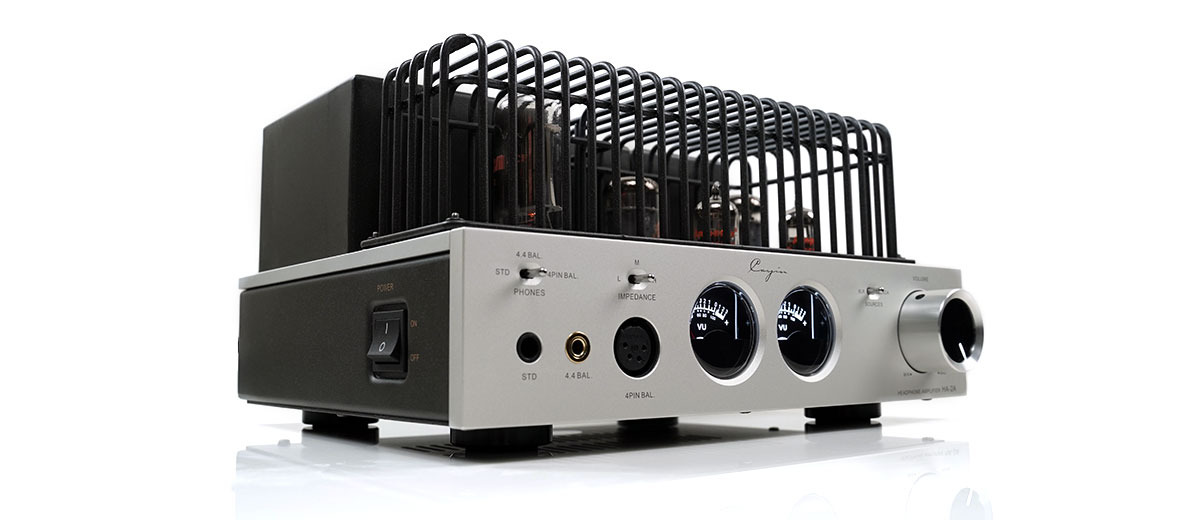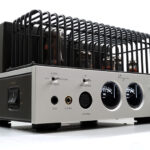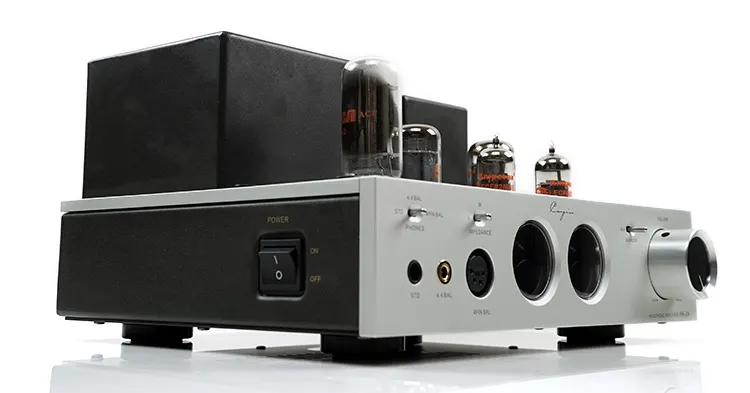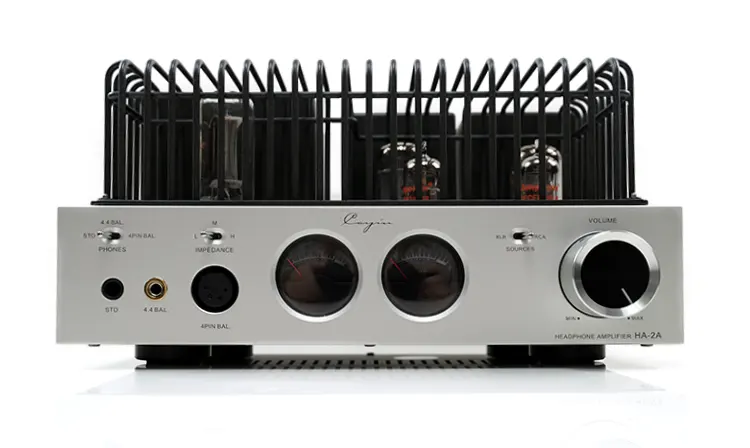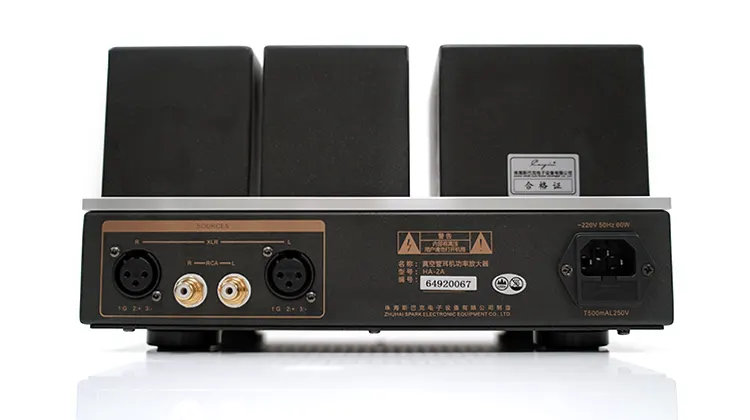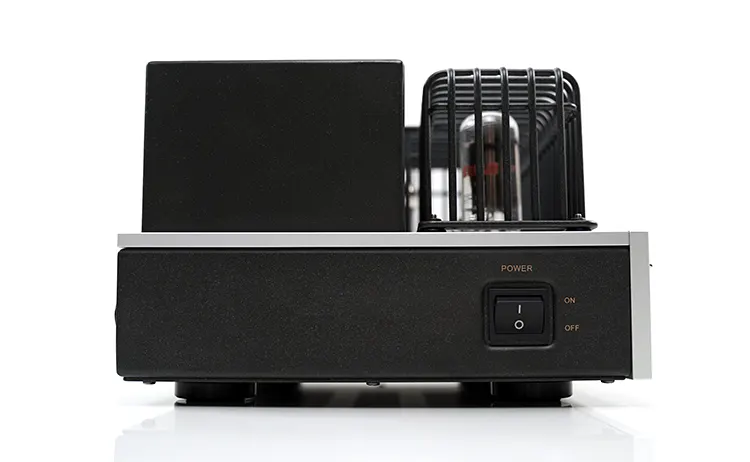In this feature, Marcus reviews the Cayin HA-2A, which is a new entry-level desktop Class A Ultralinear tube amplifier for use with headphones and IEMs. It is priced at $1299.
Disclaimer: This sample was sent to me for my honest opinion. Headfonics is an independent website with no affiliate links. I thank Cayin for their support.
You can click here to learn more about Cayin products that we have previously featured on Headfonics.
Please note, that this article follows our current scoring guidelines which you can read here.
The recently launched Cayin HA-2A adds another notch to a rapidly expanding personal audio line-up from a company with a rich and long legacy in HiFi tube amplification.
Having already reviewed their flagship HA-300MK2 SETA amplifier, the HA-2A presents a different vision at a much more affordable but not less popular end of the scale.
Priced at $1299, the HA-2A represents a pitch to a wider desktop headphone community looking for a capable compact tube amplifier form factor equally at home with IEMs as its stock-in-trade headphone appeal.
The diminutive form factor of the HA-2A also means it has a very stackable appeal with Cayin’s new “888+2 Series” of compact desktop solid-state components. That includes the new iDAC-8, iHA-8 amplifier, and a freshly updated iDAP-8 streamer; 3 components we hope to be reviewing in due course.
Features
Tube Configuration
This is Cayin’s first vacuum tube headphone amplifier to be designed with all vintage NOS or ‘New Old Stock’ tubes.
This is an Ultralinear quad-tube configuration consisting of a composite hybrid pentode/triode Amperex ECF82, (6U8 NOS) for the driver, a matched pair of Amperex 17BF11 NOS tubes for the output, and an RCA 17AX4GT NOS tube for the rectifier.
Regular tube users will know the Dutch-American Amperex brand quite well. Typically, these US-produced “Bugle Boy” tubes are known for their rich and smooth sound characteristics though still quite refined and resolving in nature.
They are also famous for their good low-noise performance with a black background which should also appeal to IEM users.
The Amperex 17BF11 NOS output tubes are dual pentode, (power and voltage), and again this is another tube rich in Amperex’s full-bodied signature tuning
The final RCA 17AX4GT NOS tube is a half-wave rectifier tube and doesn’t stray from the house Amperex warm tonal quality. In this user case, it is also responsible for supplying screen power to the front-stage electronic tubes.
Amplification
The HA-2A amplifier is balanced-driven through Cayin’s in-house designed output transformer. However, the tube amplification circuit is a point-to-point welded pure Class A transformer-coupled single-ended design with no pre-out or pre-amping capability.
The output from Amperex 17BF11 NOS output tubes is designed to feed into a pair of custom-designed in-house wounded Japanese Z11 EI Type iron core output transformers for single-ended (6.35mm) or balanced (4-pins XLR and 4.4mm) headphone output.
Like many of Cayin’s higher-end headphone amplifiers, the HA-2A amplifier’s output capability is fine-tuned through a multi-value impedance selector system.
There are three options on this particular unit ranging from low up to 64Ω, to medium, (65Ω to 250Ω), and high, (251Ω to 600Ω) with corresponding PO power values for both SE and XLR. On the low end, it ranges from 300mW SE up to 800mW balanced to its peak continuous at 750mW SE to 1W balanced.
The outlier is the 4.4mm balanced option, rated from 200mW (low) to 270mW (high). The lower power rating is designed to reduce the noise floor significantly for more sensitive headphones and balanced IEM users.
It is a similar approach to the HA-300MK2 which also has a slightly reduced output power rating for its 4.4mm PO.
Design
If you have been using Cayin desktop components before the HA-2A design language has a classy but very familiar look, albeit in a much smaller form factor.
Though visually it several shared accents with the larger flagship HA-300MK2 such as the dial finishing, switches, and dual VU meters, the silvery finishing and molecular protective film on the housing is more in keeping with the current finishing on their new 888+2 solid-state series stackable desktop units.
At 10Kg and with a reinforced base to prevent tube microphonics the HA-2A is not an insubstantial component. However, the size is not something that should give you too many issues when moving it around your room or office space.
At 270 x 215 x 143 mm with 4 strong pillar supports it will not take up too much space making it an ideal desktop companion or for smaller HiFi racks.
Labeling legibility is excellent on the rear and front panels of the HA-2A. The judicious application of lighting from the central glass-protected VU meters should add a little illumination beyond the more tasteful glow unit’s top-mounted tubes for darker room environments.
The HA-2A also comes with a single-piece tube railing guard or pre-amp tube shield that protects the tubes from EMI from nearby lights and electrical fixtures or accidental physical damage from unintended knocks during use.
The black rail guard has a resistance-based peg installation process at its base so you can use the amplifier with or without at a moment’s notice.
I/O
Despite having no pre or power amping capability, the HA-2A has a decent level of connection options front and rear.
On the rear panel, you have a choice of 3-pin XLR or dual RCA inputs and on the front panel, you can select either 4-pin XLR, 4.4mm, or 6.35mm via a mechanical switcher selector above the ports.
Though typically XLR and 4.4mm denote balanced outputs, the HA-2A is single-ended by design so these are not balanced-capable outputs.
The concept here is to offer a wide range of connection options with each connection offering a level of output power and noise to suit the likely connected gear. A concept that is further enhanced with the mechanical impedance selector switch to the far right of the front panel.
The potentiometer is a smooth-turning ALPS potentiometer rather than a stepped attenuator which is unsurprising given it’s an entry-level model. The consistency is similar to the iHA-6 pot with a clear marking on the dial for volume levels.
Controls
Thank you Cayin for not using a back power button forcing you to have to lean over a warm set of tubes to turn the HA-2A on or off. Also, thank you for not making this some tiny switch you have to look for.
The switch here is suitably large to access ‘sight unseen’ and neatly placed to the front of the left side panel.
Some users might have preferred the push button styling of the bigger HA-3A or the HA-300MK2 system which is located on the front panel. My personal feeling is that the side is more suitable here to keep the smaller front fascia as clean as possible.
Aside from that, all user-controllable options, including impedance and default PO output, are controlled by mechanical toggle switches with enough resistance to prevent accidental nudges.
Packaging & Accessories
The HA-2A comes in a compact brown cardboard box with a heavily foam-based innard that provides ample protection for the amplifier.
There is also some additional contoured foam underneath the unit’s rail guard to prevent any possible movement or knocks against the tubes which could cause damage.
Accessories are a bit on the light side, something I presume is done to keep costs down. You get the power cord, a manual, a pair of white handling gloves, and 2 spare fuses. There are no spare replacement tubes or IC cables.
The unit is voltage specific so please ensure when you unpack that you check it’s a matching voltage for your region before turning it on, for example, 110V for the USA or 240V for the UK.
Click on page 2 below for my sound impressions and recommended pairings.

